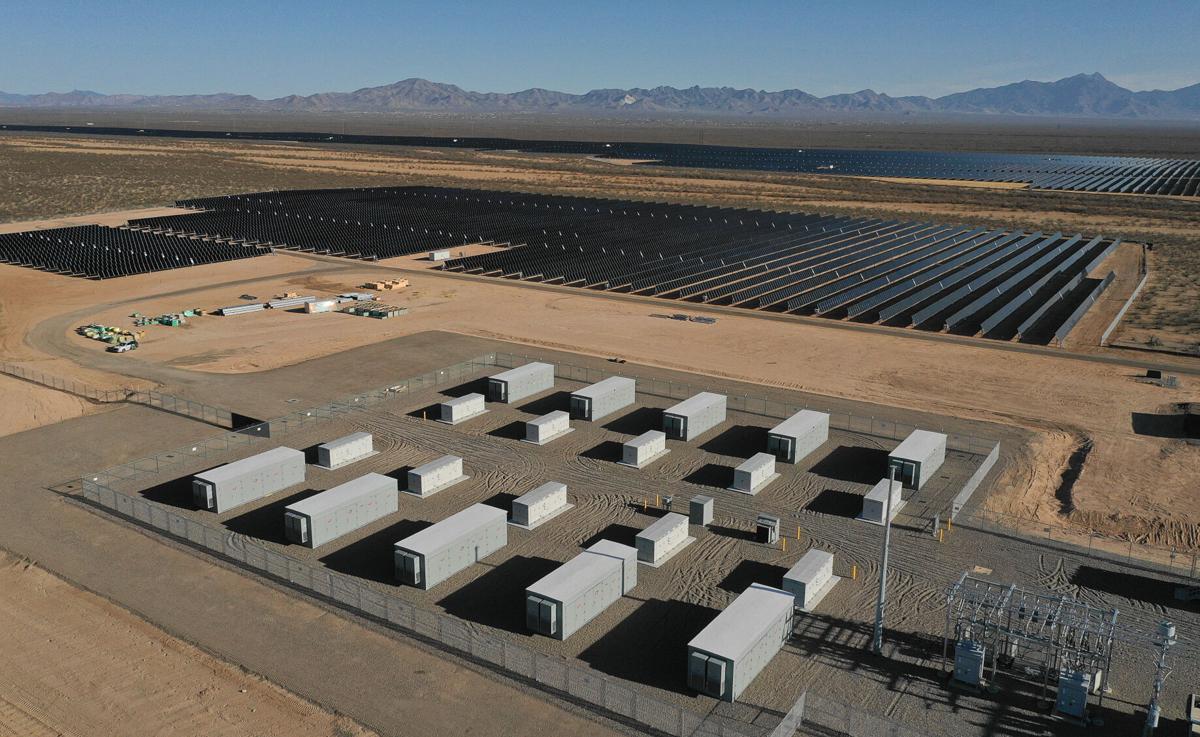Tucson Electric Power plans to build a second, large battery system in southeast Tucson to store solar and other energy until later in the day to meet peak power demand.
TEP’s planned 200-megawatt Roadrunner Reserve II system will be a twin to the Roadrunner Reserve system under construction south of Interstate 10 off South Rita Road and store 800 megawatt hours of energy, enough to serve about 42,000 homes for four hours at full capacity.
The second system is scheduled to begin operation in early 2026, a year after the similarly sized Roadrunner Reserve system begins operating on the same site.
The systems, being built side-by-side next to an existing substation, will be the largest energy storage resources in TEP’s portfolio and among the largest in Arizona.
TEP plans to charge both grid-connected batteries in the morning and early afternoon, when solar resources produce the most energy, and deliver it later in the day when energy use typically is at its highest.
“Our new Roadrunner Reserve II system will help us make the most of intermittent resources, especially during the summer when usage is highest and customers are counting on us the most,” said Susan Gray, TEP’s President and CEO. “We need additional energy storage as part of a diverse energy portfolio to support service reliability.”
Construction on Roadrunner Reserve II is scheduled to begin later this year.
TEP will own and operate both Roadrunner Reserve systems, which are being designed and built by Scottsdale-based DEPCOM Power Inc.
Both systems will feature lithium-iron phosphate battery cells, a newer technology that offers longer life and safer operation than other types of battery systems, TEP said.
Roadrunner Reserve II was selected through TEP’s 2024 all-source request for proposals process, which identifies the most cost-effective projects among competing, technology-agnostic proposals that satisfy specific energy requirements, the utility said.
TEP currently has 50 MW of energy storage capacity, including a 30-MW battery energy storage system at the Wilmot Energy Center south of the city, and several smaller systems.
Check out some innovative and sometimes overlooked energy-saving strategies that can help you and your wallet survive Tucson's summer swelter.





